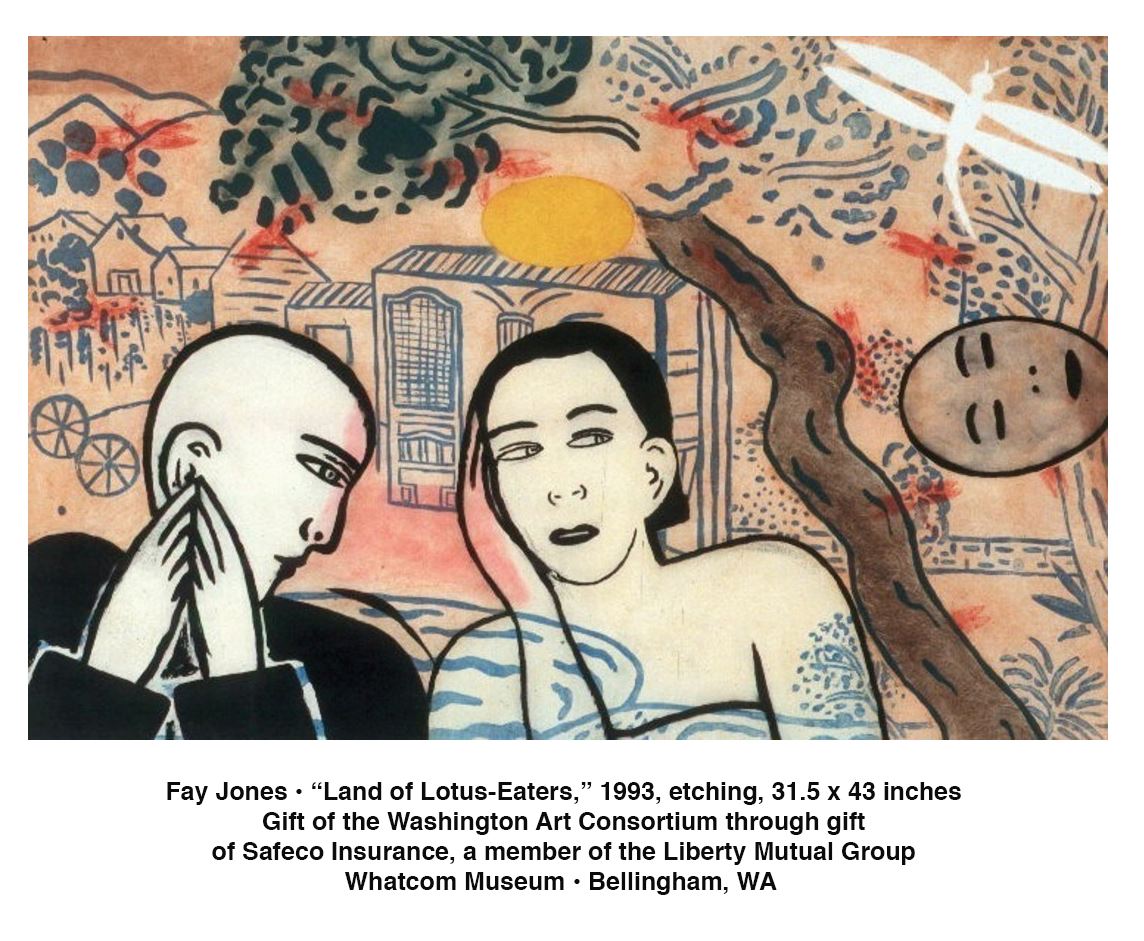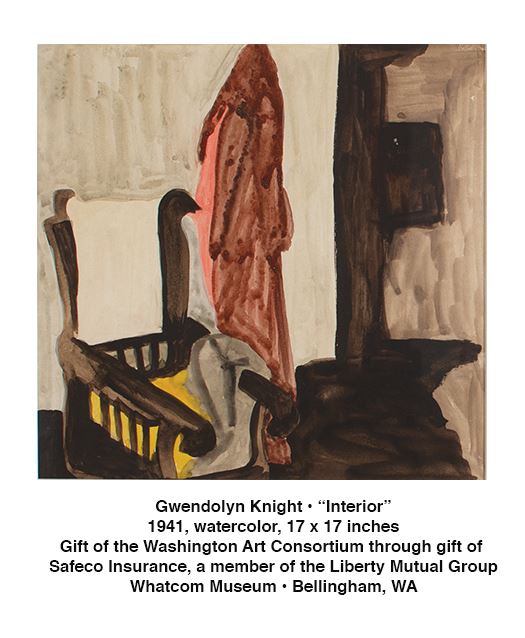
How are museums using this challenging time to analyze and review their collections? With many museums closed to the public and traveling exhibitions on pause, some museums are using this time to look at their collection with renewed vision. Are key artists missing from the collection? How can the museum’s collection represent more diverse voices and perspectives? What is working in the collection, and what is not? Museum collections are constantly being reviewed and this is precisely the exercise that many museums are undertaking during this time. Whatcom Museum’s exhibition, “Anatomy of a Collection: Recent Acquisitions and Promised Gifts,” is both a celebration of the 10-year anniversary of the opening of the Lightcatcher building and a testament to the many long-standing relationships between the museum, artists, and art patrons.
 The exhibition includes both artworks that are recent acquisitions to the museum but also pieces that are promised gifts by art collectors and museum supporters. The exhibit text also seeks to explain the “how?” and “why?” behind artwork acquisitions and the various collecting goals of the institution. Visitors will notice that the exhibition includes a multitude of different mediums, sizes, and spans nearly 100 years. A sculpture of a bird by beloved Northwest artist Philip McCracken greets visitors up on entry and to the viewer’s left is an impressive triptych by Gregory Amenoff. The burst of color exemplified in the artworks by Amenoff, Mary Henry, and Cris Bruch are a delightful re-entry into a physical art exhibition after months of viewing shows online.
The exhibition includes both artworks that are recent acquisitions to the museum but also pieces that are promised gifts by art collectors and museum supporters. The exhibit text also seeks to explain the “how?” and “why?” behind artwork acquisitions and the various collecting goals of the institution. Visitors will notice that the exhibition includes a multitude of different mediums, sizes, and spans nearly 100 years. A sculpture of a bird by beloved Northwest artist Philip McCracken greets visitors up on entry and to the viewer’s left is an impressive triptych by Gregory Amenoff. The burst of color exemplified in the artworks by Amenoff, Mary Henry, and Cris Bruch are a delightful re-entry into a physical art exhibition after months of viewing shows online.
The exhibition is organized in several categories, including medium, geography, style, and time period. However, the artwork placement feels intuitive and the groupings of artworks bring many questions to mind. The inclusion of Clayton James was an unexpected, but delightful, surprise; almost like seeing a long-time friend. James studied at the Rhode Island School of Design and was later relocated to a camp for conscientious objectors in Oregon during World War II. Both James and his wife Barbara Straker James were friends with Morris Graves and they spent many years in La Conner, Washington. Three of Clayton’s landscape paintings are on display. James stopped making sculpture and turned to painting, but thankfully the museum also chose to exhibit two of his ceramics as well. Neither are titled or dated, but the work truly speaks for itself. Both are in James’ iconic style: white finish and smooth, organic forms. 
Around the corner from James’ sculptures is another area dedicated to other Northwest artists. A suspended painting by Mark Tobey shows off both sides of the canvas. The paintings are a wonderful example of Tobey’s white writing. Nearby are three photographs by Mary Randlett, including a portrait of Jacob Lawrence in his studio. One of Lawrence’s hand rests on his hip while the other grasps an artwork that is resting on the ground. The viewer can imagine that Randlett and Lawrence are conversing as friends and this photograph captures a moment during their conversation. The other two photographs demonstrate Randlett’s mastery of capturing movement and light. “Palouse Falls Gorge” is a look into a gorge and the light beautifully reflects off the rocks. The other, “Falling Waters (after a Neil Meitzler Painting)” is a moment in time as a waterfall careens down the cliff onto the rocks below. A guest familiar with Neil Meitzler will immediately recognize the similarities. One artist capturing the falling water with a camera and the other painting the rush of movement with a brush. 
Around the corner from the Tobey paintings are several prints. All are excellent examples of a variety of printmaking methods, but guests may be surprised to encounter a print by Käthe Kollwitz. The artwork is from 1899 and titled “Uprising (Aufruhr)”. The print features a group of people marching in unison with a floating figure above them, appearing to encourage them to keep moving forward. The viewer can assume that they are member of the working class, a group that was often a subject for Kollwitz. The print demonstrates the artist’s ability to express the impact of poverty and war on the working class.
Chloé Dye Sherpe
Chloé Dye Sherpe is a curator and art professional based in Washington State.
 “Anatomy of a Collection” is one of three exhibitions currently on view at the Lightcatcher building. “Conversations Between Collections: The Smithsonian American Art Museum and the Whatcom Museum” and “People of the Sea and Cedar: A Journey Through the Tribal Cultures and History of the Northwest Coast” are also on display. While the museum is not open to the public, they are allowing individuals to make private gallery tours. Whatcom Museum’s Lightcatcher Building, located at 250 Flora Street in Bellingham, Washington. Visit the museum’s website www.whatcommuseum.org to learn more about their COVID updates and to sign up for a private appointment.
“Anatomy of a Collection” is one of three exhibitions currently on view at the Lightcatcher building. “Conversations Between Collections: The Smithsonian American Art Museum and the Whatcom Museum” and “People of the Sea and Cedar: A Journey Through the Tribal Cultures and History of the Northwest Coast” are also on display. While the museum is not open to the public, they are allowing individuals to make private gallery tours. Whatcom Museum’s Lightcatcher Building, located at 250 Flora Street in Bellingham, Washington. Visit the museum’s website www.whatcommuseum.org to learn more about their COVID updates and to sign up for a private appointment.